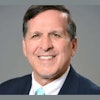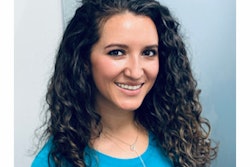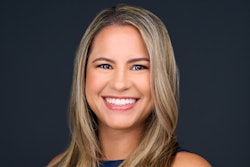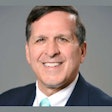Patient communication skills are necessary for the dental administrator to explain how their insurance plans calculate coverage, especially when getting paid is the goal. Most general dental practices accept the assignment of benefits (payment) from a mixture of plans that are out of network (OON) and plans that are in network (INN). It gets tricky when patients don't know the difference and only see that services are paid at 100%, 80%, and 50%.
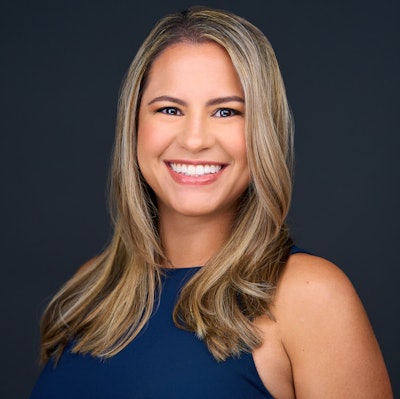 Estela Vargas, CRDH.
Estela Vargas, CRDH.
INN means that the dental practice has signed a contract or agreement to accept the terms of the insurance plans, including their fee schedule and limitations.
OON refers to a dental practice that is not contracted to accept the general terms of the plan or the fee schedule but is still bound by specific rules and regulations required for insurance billing. OON providers charge their regular or standard office fee schedule.
Every dental practice wants to attract new patients and keep the existing patient base happy. The most patient-friendly approach is to accept payment from insurance plans. The questions are, "What is the payment?" and "How much does the patient owe?"
Estimating coverage is not what it used to be, whether INN or OON. Most plans now go by MAC, or the maximum allowable charge. The MAC is what the insurance plan pays for a covered service from a provider, whether they're INN or OON.
If an in-network provider charges more for a service than the plan's MAC fee, they must accept the MAC fee, because they are an INN provider. The difference between the provider's charge and the MAC fee would be a write-off from the account, and the patient would not be billed. The insurance plan would then cover a percentage of the MAC fee, and the patient would owe any outstanding balance (coinsurance) if the deductible has been met.
An out-of-network dentist, however, isn't contractually obligated to accept the MAC fee. That means the patient is responsible for coinsurance and any difference between the provider's charge and the MAC fee.
Some dental plans pay OON providers from a usual customary and reasonable (UCR) fee calculation. The methods by which dental plans calculate the UCR payment can be confusing. They are not standard, so they can change from state to state and plan to plan, but they are set by insurance companies. Usual fees are fees set or determined by the dentist. They are also known as their standard, regular, or practice fee schedule.
Reasonable and customary fees are defined as fees set by insurance companies. Insurance companies set fees for specific procedures. Fees are based on what providers in the patient's geographic area charge for a procedure on average.
UCR plans display costs as a percentile; the most common is the 90th percentile followed by the 80th and 70th. Translated, this means the UCR value for a given procedure will be set so that 90% of providers in an area will charge that amount or less. This is the maximum the insurance plan will pay for a covered service from an OON provider.
UCR values are calculated by a third party based on claims for dental procedures in a specific ZIP code area. Sometimes, a fee determined to be customary may be lower than the reasonable fees for the same procedure. Customary fee schedules can vary greatly among plans, even if those plans operate in the same region. UCR plans are also often best for patients who live in remote areas with few INN dentists.
The disadvantage of UCR dental plans is that they can differ significantly from state to state. Understanding the differences in UCR fees based on geographic factors is important for determining which fees will apply in your practice region.
A common criticism of UCR dental plans is the lack of transparency in rate calculation, which can confuse the payout issue. Some UCR dental plans have fees higher than what one might expect or see offered in a MAC dental plan.
Patients often choose INN dental providers as the most cost-effective option, as OON providers do not have a fee agreement with the insurer. The insurance plan's payments for eligible services are based on either MAC or UCR rates.
Understanding the differences in UCR fees based on geographic factors is essential to deciding which fees will apply in the patient's region, and terms and definitions may vary by state. As you can see, the subject of fee calculations and payments can confuse the dental team and the patient and cause communication gaffes.
The employer is ultimately responsible for explaining the dental insurance policy to the employee/patient and providing access to information describing how the plan pays and the patient's coinsurance responsibility. We know from experience that this is not always so, and the dental practice is placed in the position of being the "expert."
After insurance has been paid, most dental practices receive phone inquiries such as the example below:
A front-desk administrator is asked by a patient why they (the patient) still have a balance even though the plan says it covers 100% of that service category.
The answer to the inquiry is as follows:
"The dentist treatment plan includes your standard fee of $87 for procedure D0120. The plan covers $30, representing 100% of the patient's plan MAC."
To circumvent the above issue, it is best that before treatment, the patient is informed that their coinsurance is $57. The patient will know ahead of time, and this ensures that there are no outstanding balances. Always make sure they pay their estimated coinsurance before treatment begins.
Don't claim to be an insurance expert, because no one can keep abreast of all the changes on the hundreds of plans in the marketplace, but try to communicate to patients as their advocates for getting their claims paid promptly and fairly.
Editor's note: References available upon request.
Estela Vargas, CRDH, is the founder and CEO of Remote Sourcing, a dental insurance billing and revenue recovery service. She is a graduate of Miami Dade College's dental hygiene program. Vargas' extensive background in the clinical arena of dentistry is coupled with her experience as a practice administrator and business executive.
The comments and observations expressed herein do not necessarily reflect the opinions of DrBicuspid.com, nor should they be construed as an endorsement or admonishment of any particular idea, vendor, or organization.

